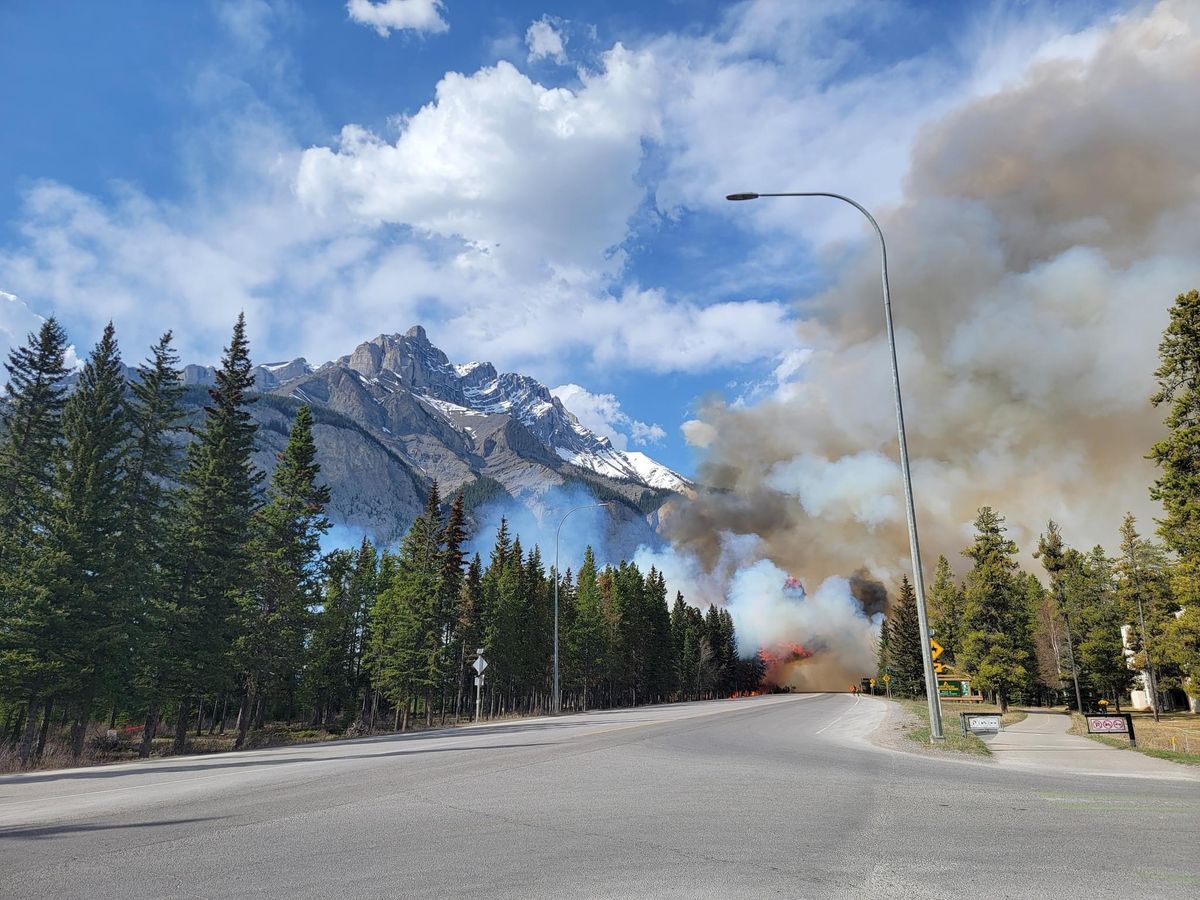Exercise in times of Poor Air Quality

(originally appeared in the Crag & Canyon)
It seems that smoky skies are here to stay. This last weekend was particularly bad as wildfires raged across BC and AB. Much of the western and central US is being ravaged by fires; global warming is a thing, and we may as well get used to this haze, as there is no easy or quick solution. I am not going to get into political debates as to how to remedy this, but one thing I am interested in is the effects of all this smoke on our health, our cardiorespiratory systems, and whether or not it is safe to exercise outdoors when the air quality is so poor.
The WHO estimates that air pollution contributes to 800,000 premature deaths per year. Fine particulate matter (such as is found in smoky air), when inhaled, can lodge in our airways leading to inflammation in our lungs and symptoms such as chest tightness, shortness of breath and coughing. Inflammation also occurs more systemically in our bodies, leading to an increase in cardiovascular and cerebrovascular diseases.
The effects can be both acute (short term) or chronic (long term). The Harvard Six Cities study followed a large number of individuals for almost two decades, finding an excess of health problems in those living in the most polluted cities, most notably cancer and cardiovascular disease. These were epidemiological studies, following large cohorts of people over many years, so they provide an overview, but not much information about individual risk. Canmore generally has good air quality but that may be a thing of the past in the summer months, at least if the last few years are representative.
How do we navigate this when thinking about the regular outdoor activities we all love?
A few studies have attempted to shed some light on the possible consequences of exercise in polluted air, but as with most things, it’s complex, and the devil is in the details.
Firstly, we know that living in polluted areas leads to health problems. The Harvard study clearly showed increases in cancer and cardiovascular disease in those living in the most polluted cities.
Secondly, we also know that there are transient deteriorations in lung function in runners who jog next to busy highways, and in cyclists after their morning commute in busy traffic. These are transiently observed effects however.
Danish investigators dug into some long term data to try to look at more long term health consequences. What they found was that in the long term, the beneficial effects of regular exercise seemed to negate most of the potential negative effects of breathing in all that pollution. A win for exercise. The authors assumed that long term pollution exposure would lead to worse outcomes in chronic exercisers, but found the opposite to be true. They concluded that negative cardiorespiratory consequences are transient. These results have been replicated in two further European studies, so they are probably valid observations.
So exercise seems to be OK, even in polluted air, at least in the long term.
What about intensity of exercise? Some of my athletic patients have expressed concerns about going hard when it’s obviously smoky outside.
Researchers in BC set about to look at this very issue, hypothesizing that intense exertion in polluted air would be worse than light activity. Healthy recreational male cyclists performed various 30 minute workouts at different intensities, exposed to either filtered (clean) air, or air polluted with diesel exhaust particles. The authors of this study guessed that at higher intensity, when we naturally breathe more rapidly, more deeply and through our mouths more than our noses, exposure to diesel fumes would result in more negative effects in our lungs. They measured a wide variety of cardiovascular and metabolic parameters.
Surprisingly, at higher intensities, fewer negative results were observed. The higher breathing rates at more intense exertion seemed to offer some protection. It appeared that low intensity activity in polluted air was worse. They concluded that during intense exertion changes in airway temperature and blood flow, and possibly the release of adrenaline, provides some protection against toxic diesel fumes.
So how do we put all of this together into some practical recommendation?
I’ll put my own spin on things here.
Firstly, I think if you are at all symptomatic (breathless, coughing, itchy eyes etc) when exercising outdoors during times of poor air quality or if you have pre-existing lung or cardiovascular disease, it is probably much safer to exercise indoors (assuming better air quality inside) or skip the workout completely. Any new onset shortness of breath or coughing should likely warrant a visit to your physician for an examination and pulmonary function testing.
If you are healthy however, and are not experiencing anything unusual when you exercise outdoors, then I think these studies can provide some reassurance.
You can be reassured that any transient decline in lung function is likely not going to cause you long term problems, and in fact you’re going to get most of the benefits of that exercise session; and finally, if you were planning on something a bit more intense, then you can be largely reassured that more intensity does not equal more risk to your lungs, and in fact a little intensity may offer some degree of protection.
I do offer a word of caution however. Listen to your body when you’re out there, and if things feel off, head inside.